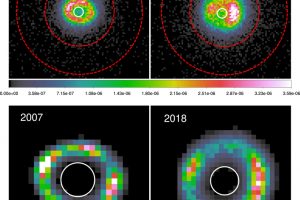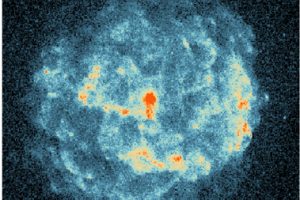Previsioni sulle osservazioni future della stella a neutroni in SN1987A. L’articolo: “Investigating the Time Evolution of the Thermal Emission from the Putative Neutron Star in SN 1987A for 50+ Years” di A. Dohi (Kyushu University) pubblicato su ApJ

Il resto della supernova SN1987A, situato nella Grande Nube di Magellano, è un oggetto di straordinaria importanza nello studio delle supernove e dei resti di supernova. Infatti, è l’unico evento del genere avvenuto in epoca moderna ad una distanza così ravvicinata che ci permette di effettuare osservazioni dettagliate. SN1987A è stata una “core-collapse supernova”, generata dal collasso del nucleo della
» Read more

